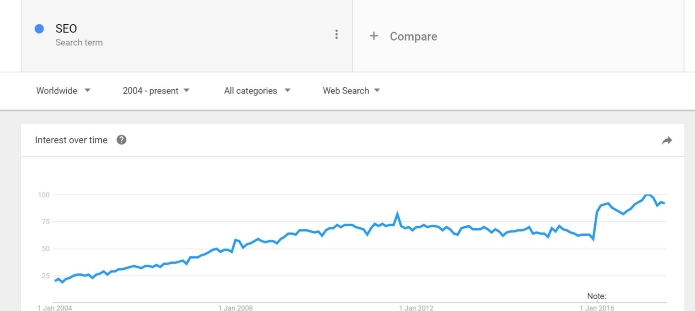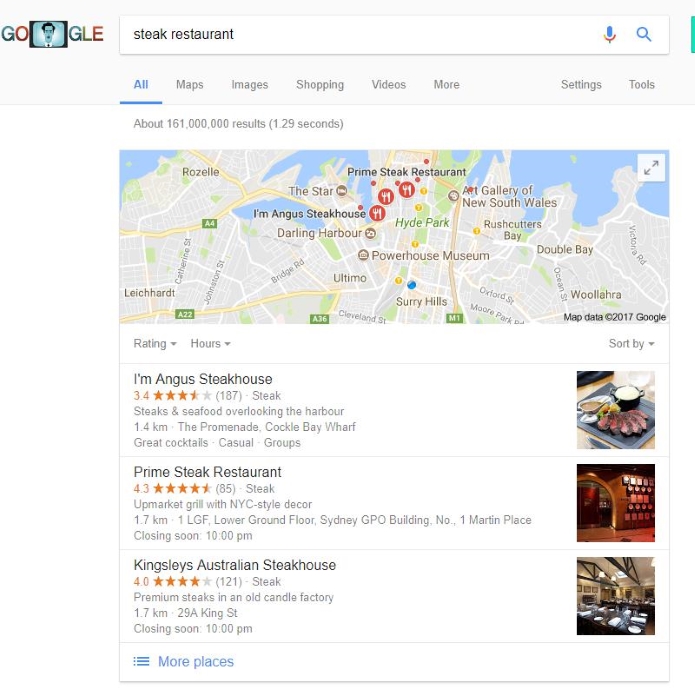
Every business owner's dream is to see their website appear on the first page of Google. But how do you achieve this?
There are many ways for small business owners to get to the first page of Google. And it’s not as hard as you may think. Don’t get me wrong it won’t happen overnight and it’s going to take some time.
There are some methods that will get quicks wins and others that will take months. But if you follow proven methods and stick with it, you will start seeing results over time.
As a digital marketing consultant, I've seen it all. And In order to help business owners get the edge in Google, I wanted to create a complete guide on how to get your website on Google.
Be Found, Be Seen - How to Get Your Website On Google?
You want the business exposure and you’re gonna get it in this guide I’ll cover the following tactics to rank on Google:
1. Search engine optimisation (SEO)
2. Pay-per-click advertising
3. Local SEO
4. Google Search Console
Execute all of the above techniques and you will see your presence in Google grow rapidly.
How Does Google Work?
Before you attempt to rank in Google search results, you need to understand the foundation of the famous search engine.
Google’s search engine is extremely complex but we know three things without a doubt.
1. Google crawls the internet look for pages to crawl, such as your website.
2. Once Google finds a website in puts it in its index. Yep, just like a book.
3. Whenever a person searches, Google goes into its index and pulls out the most relevant and trustworthy websites for that particular search.
This is one of the reasons it is super important to make sure your website is accessible to search engines. Or everything I’m about to say about how to get your website on Google is pointless.
Now I will go through each technique that can help your business get found on Google.
Search Engine Optimisation (SEO)
Perhaps the most obvious and well-known technique to ranking in Google is SEO. All business owners have heard this word skyrocket over the past few years.
Check out the rise of SEO in Google trends:

It’s for good reason, SEO works. There are many elements to a great SEO strategy but they all fall into 3 categories:
1. On Page Optimisation
2. Off Page Optimisation
3. Technical SEO
2 - Pay-per-click advertising (PPC)
If you're looking for a quick win pay per click (PPC) advertising is for you. PPC involves paying to have your ads appear in search engines. But unlike SEO, you won’t have to wait months to see results. Within a matter of hours, you can hold position 1 for all your keywords.
To do this you will need to sign up to a PPC advertising platform. Google’s advertising platform is known as, Google Adwords.
It’s free to sign up but you will need to put in your credit card details to be able to run ads. However, unless you know what you’re doing you can waste your money pretty quickly.
But if you’re willing to put in the time to learn you can see great results. Google Adwords works on an auction model, advertisers bid on keywords and when people search for keywords an auction begins.
Unlike traditional auctions, the highest bidder doesn’t always win. Google is always trying to enhance the user experience and their AdWords auction reflects this. The auction is determined by ad rank which is based off two factors:
1. Bid
2. Quality Score
A bid is simply the maximum amount you're willing to pay for a click on a particular keyword. But quality score is how relevant your ad and landing page are to the keyword. And also your predicted click through rate on the ad.
A great quality score can see you pay drastically less for a higher position in Google than someone with a bad quality score. As you can imagine it’s extremely important to try and get great quality scores for all your keywords.
3 - Local SEO
As a small business most of the time, you have a shop or store in the local community. When searches happen in your area you want your business to appear, right?
For example, someone searches, “coffee shop near me”, if you run a coffee shop you want to appear in Google.
Optimising your local SEO is a sure way to make this happen. If done correctly you can appear in the top spot on Google every time.
What is Local SEO?
Local SEO is the process of optimising your website to appear in Google’s local search results. At it’s core it revolves around building a citation profile of your name, address and phone number (NAP).
Local SEO strategy
A local SEO strategy ultimately aims to land yourself in Google’s “3 pack” (See below). To do this you need to implement some core strategies:
1. Google My Business Page
2. Local Citations
3. NAP
4. Local On-page

Google My Business Page
The foundation of your local SEO strategy in centred around you Google My Business page.
Best Practices: On a high level, complete every aspect of your profile. But make sure you do the following:
* Complete the entire profile, as much information as possible
* Choose the most important categories for your business
* Get as many photos as humanly possible!
* Put in your local phone number
* Important: make sure your address is consistent with your website and business listings
* Get your best customers to write some reviews
Local citations
Local citations are mentions of your business name and address across the internet. An example of this might be on yellow pages, in a local newspaper or business chamber
These are very important signals to Google that you're a local business and will help you rank. You should try to build up a citation profile for your business. But be sure to keep your name, address and phone number (NAP) consistent.
Name, Address & Phone Number (NAP)
I’ve mentioned this frequently throughout this local SEO section and it’s because, without it, you won't rank well for local searches.
It’s very simple for every mentioned of your business online make sure you're using the same details. On your website use Schema.org to put this information in the header and footer of your pages. This is technical so make sure you read up on it or get some professional help.
Local On-page
When optimising your individual web pages for SEO you need to consider your target audience. If you can only serve people in your local community it doesn’t make sense to target your keywords nationally.
Narrow your focus and optimise your on page SEO for your local area. For example, if you’re a florist in Enmore, Sydney and don’t sell online. Your title tag should not be, “Joe’s Florist” rather "Joe’s Florist Enmore”.
4 - Google Search Console
Google Search Console (GSC) is Google’s webmaster tool that helps you enhance your performance.
They key things we want to use GSC for to help to get your website on Google are:
1. Test for crawl errors
2. Submit sitemaps
3. Review search analytics
Test for crawl errors
If Google is unable to crawl your website it will never be able to rank it. It is very important that you submit your website to GSC and test for any crawl issues.
Submit Sitemaps
Submitting your sitemap can help speed up the process for getting your website indexed by Google. You can use a plugin on Wordpress like Yoast SEO to generate one quickly.
Review Search Analytics
The most powerful feature for how to get your website on Google is search analytics. This gives you data on how your website is ranking in Google. Importantly, it tells you what keywords you're almost ranking for. You can use this information to identify opportunities to rank better.
Final Thoughts on how to get your website on Google?
If you think getting on Google’s first page is going to happen overnight forget it. You can achieve this by using PPC but for long term strategy, it is much better to improve your organic rankings.
If you’re keen to get started yourself there are plenty of resources on the internet to learn.
| < Prev | Next > |
|---|





